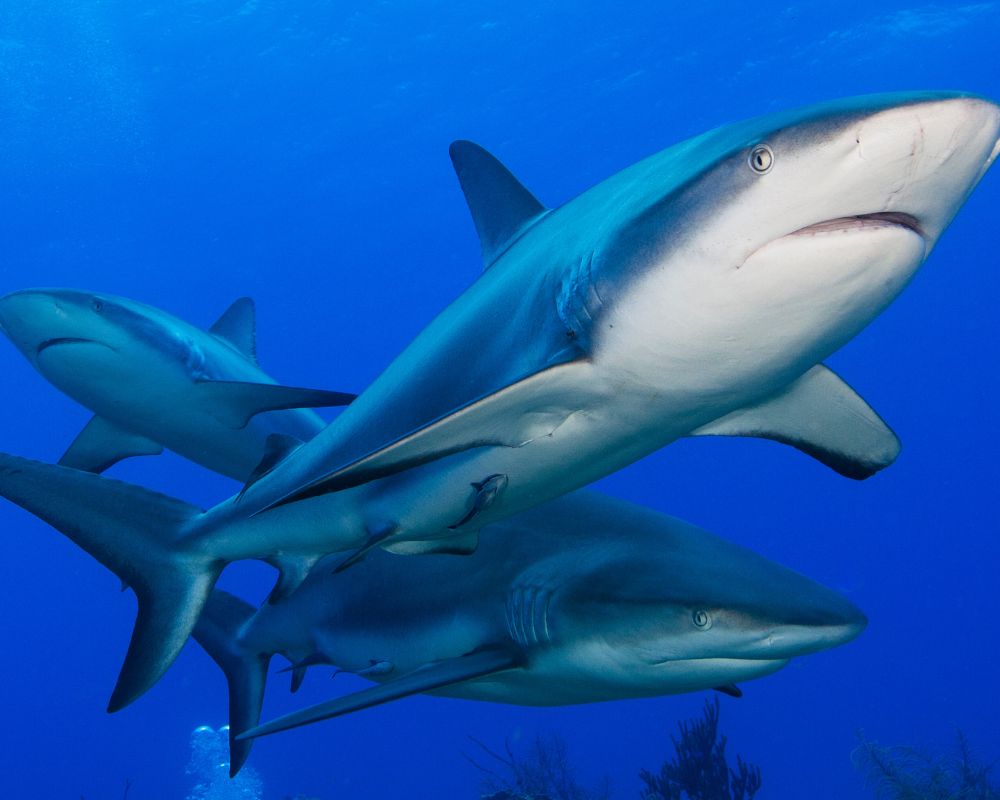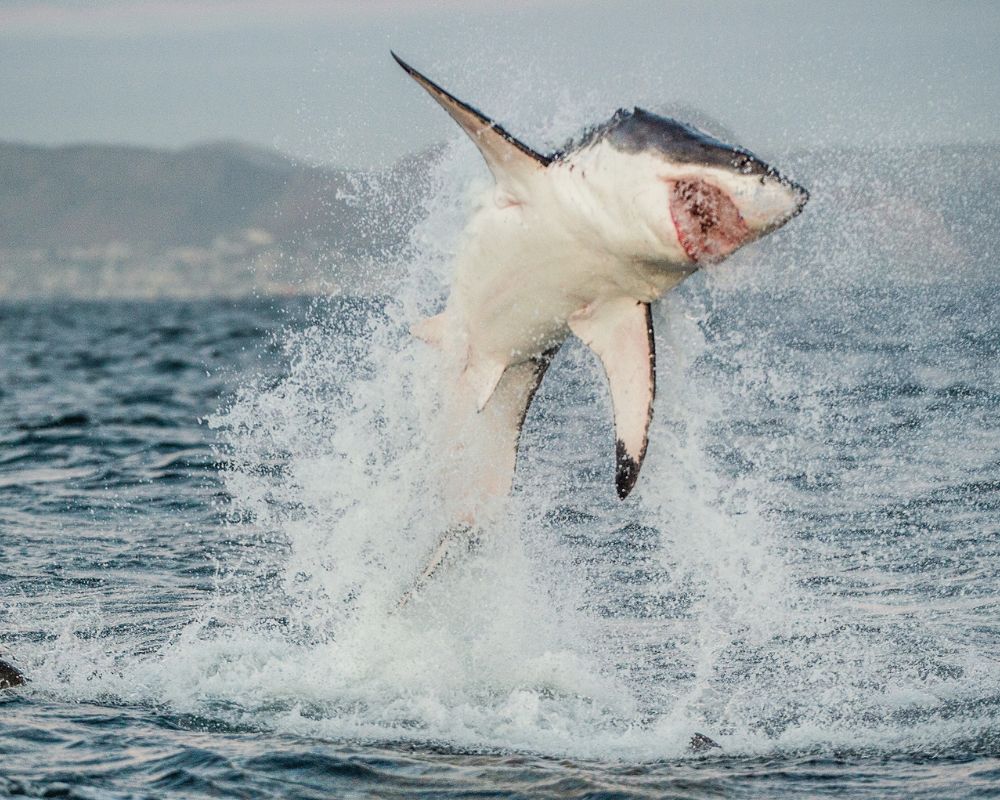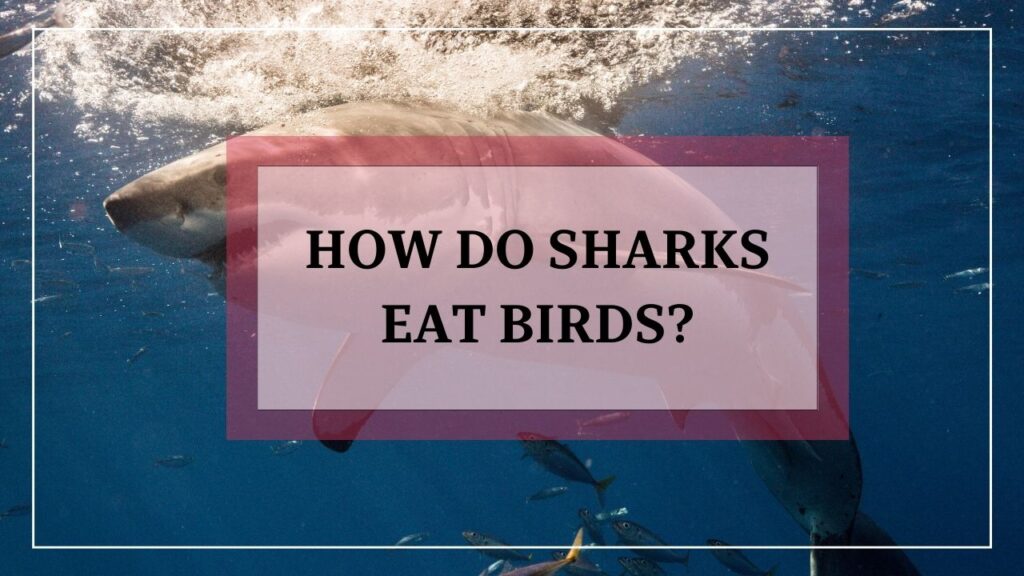Sharks are known for their sharp teeth and voracious appetites. While most people associate them with eating fish or seals, sharks are also known to prey on birds. Yes, you read that right – birds! As strange as it may seem, sharks have been known to take down a variety of bird species, from gulls to pelicans.
But how exactly do sharks go about catching and eating birds? In this post, we’ll explore the fascinating world of shark predation on birds, including the types of sharks that eat birds, why sharks eat birds, and how they hunt and digest them.
Sharks catch birds by swimming quickly and launching surprise attacks from below, then biting them with their sharp teeth. Once captured, the birds are swallowed whole or torn apart into smaller pieces and consumed. Some species of sharks are known to actively hunt birds as part of their diet, while others may scavenge on dead or dying birds in the water.
Now, let’s jump to the details:
Types of Sharks That Eat Birds

Sharks are incredibly diverse creatures, with over 500 known species. While not all sharks eat birds, there are a few types that are known to do so. These include:
Coastal Sharks
Coastal sharks are typically found in shallow, coastal waters and estuaries. They are often opportunistic feeders, meaning they will eat a wide variety of prey depending on what is available. Some examples of coastal sharks that have been observed eating birds include:
- Blacktip Sharks: These sharks are known for their impressive jumping ability, and have been observed leaping out of the water to catch birds in mid-air.
- Bull Sharks: Bull sharks are known for their aggressive behavior, and have been observed preying on birds that are swimming on the water’s surface.
- Tiger Sharks: Tiger sharks are known for their indiscriminate feeding habits, and have been observed eating a wide variety of prey, including birds.
Pelagic Sharks
Pelagic sharks are typically found in open ocean waters, away from the coast. They are powerful swimmers and often hunt fast-moving prey, such as tuna and squid. While they are not commonly known to eat birds, there are a few pelagic shark species that have been observed doing so. These include:
- Great White Sharks: Great white sharks are apex predators that are known for their powerful bite force. They have been observed preying on seabirds, such as gulls and cormorants.
- Mako Sharks: Mako sharks are known for their impressive speed and agility, and have been observed chasing and catching birds on the water’s surface.
- Blue Sharks: Blue sharks are opportunistic feeders that will eat a wide variety of prey, including birds that are swimming or flying near the water’s surface.
While these sharks are known to eat birds, it’s important to note that this behavior is not common for all individuals within a species. Some sharks may never encounter birds in their natural habitat, while others may have a preference for other types of prey. However, for the sharks that do eat birds, this behavior is an important part of their diet and survival strategy.
Why Sharks Eat Birds
So why do sharks eat birds, and what role does this behavior play in their diet and survival?
Nutritional Value
One of the primary reasons that sharks may eat birds is their nutritional value. Birds are a rich source of protein and fat, which are important for sharks to maintain their energy levels and metabolic functions. In some cases, birds may be easier for sharks to catch than other types of prey, such as fast-moving fish or seals.
Opportunistic Feeding
Many sharks are opportunistic feeders, meaning they will eat whatever prey is available in their environment. For sharks that inhabit coastal or estuarine areas, birds may be a common source of prey, especially if they are attracted to fishing boats or other human activities that can increase the availability of food.
Natural Behavior
While it may seem strange for sharks to eat birds, this behavior is actually part of their natural diet in some cases. For example, some shark species that live in areas where birds are abundant may have evolved to include them as part of their regular diet.
Role In Ecosystems
Sharks are important predators in marine ecosystems, and their feeding habits can have important effects on the populations of their prey species. By consuming birds, sharks may help to control populations of certain bird species, which can in turn have cascading effects on other parts of the ecosystem.
How Sharks Hunt Birds
Sharks are powerful predators that are well-adapted to hunting a wide variety of prey in their marine environments. But how do they go about hunting birds, which are often fast-moving and highly maneuverable in flight? Here are a few of the ways that sharks may hunt birds:
Ambush
Some shark species, such as the bull shark, are known for their ambush-hunting behavior. These sharks may lie in wait near the surface of the water, hiding beneath the waves until a bird comes within range. Once a bird is in range, the shark will launch a sudden attack, using its powerful jaws to grab the bird and pull it beneath the water.
Surface Feeding
Other shark species may hunt birds that are swimming or floating on the water’s surface. Sharks that engage in this type of feeding behavior may swim near the surface of the water, watching for any signs of prey activity. When a bird is spotted, the shark will swim quickly towards it and use its jaws to grab the bird in mid-flight or on the water’s surface.
Jumping

Some shark species, such as the blacktip shark, are known for their impressive jumping ability. These sharks may leap out of the water in pursuit of birds that are flying above the water’s surface. Once the shark is in the air, it may use its powerful jaws to grab the bird in mid-flight, before falling back into the water with its prey.[1]
Tail Slaps
Another hunting behavior that has been observed in sharks is the use of tail slaps to stun or immobilize birds. Sharks that engage in this behavior may swim quickly toward a bird and use their powerful tail muscles to create a shockwave in the water. This shockwave can stun or immobilize the bird, making it easier for the shark to grab it in its jaws.
How Sharks Digest Birds
Once a shark has successfully captured and consumed a bird, the next step is digestion. Sharks have a unique digestive system that allows them to break down and extract nutrients from a wide variety of prey, including birds. Here are some of the ways that sharks digest birds:
Stomach Structure
Sharks have a muscular stomach that is divided into compartments known as chambers. The first chamber, known as the cardiac stomach, is used to store and partially digest food. This chamber is lined with gastric acid-secreting cells that help to break down the food into smaller pieces. Once the food is partially digested, it is passed into the next chamber, the pyloric stomach, where the nutrients are absorbed.
Slow Digestion
Sharks have a slow digestive system compared to many other animals. This is due in part to their cold-blooded metabolism, which slows down the rate of digestion. In addition, the tough and fibrous nature of bird feathers and bones can make digestion more difficult and time-consuming.
Enzymatic Breakdown
To help break down the tough feathers and bones of birds, sharks use a variety of digestive enzymes. These enzymes help to break down the keratin in feathers and the calcium phosphate in bones, making them easier to digest.
Regurgitation
In some cases, sharks may regurgitate indigestible parts of their prey, such as feathers and bones. This can happen if the food is too difficult to digest or if the shark overeats and needs to make room in its stomach.
Interaction between Sharks and Birds
While sharks and birds may seem like unlikely predators and prey, there are actually several instances where these two species interact in the wild. Here are some examples:
Predation
As we’ve discussed, some species of sharks actively hunt and consume birds as part of their diet. While this is not a common occurrence, it is an important part of the ecology of these species and can have an impact on the populations of both birds and sharks.
Scavenging
Sharks are well-known scavengers, and will often feed on dead or dying animals in the water. This can include birds that have died or been injured at sea. In some cases, sharks may even scavenge on the carcasses of large seabird colonies, such as those found on remote islands.
Commensalism
In some cases, birds may benefit from their association with sharks. For example, certain species of seabirds will follow sharks and feed on the scraps left behind after a shark has fed on a larger prey item. This relationship is known as commensalism, where one species benefits without harming or helping the other.
Symbiosis
While not common, there are some examples of symbiotic relationships between sharks and birds. For example, there are species of cleaner birds that will pick parasites and debris from the skin of sharks, providing a cleaning service that benefits both parties.

